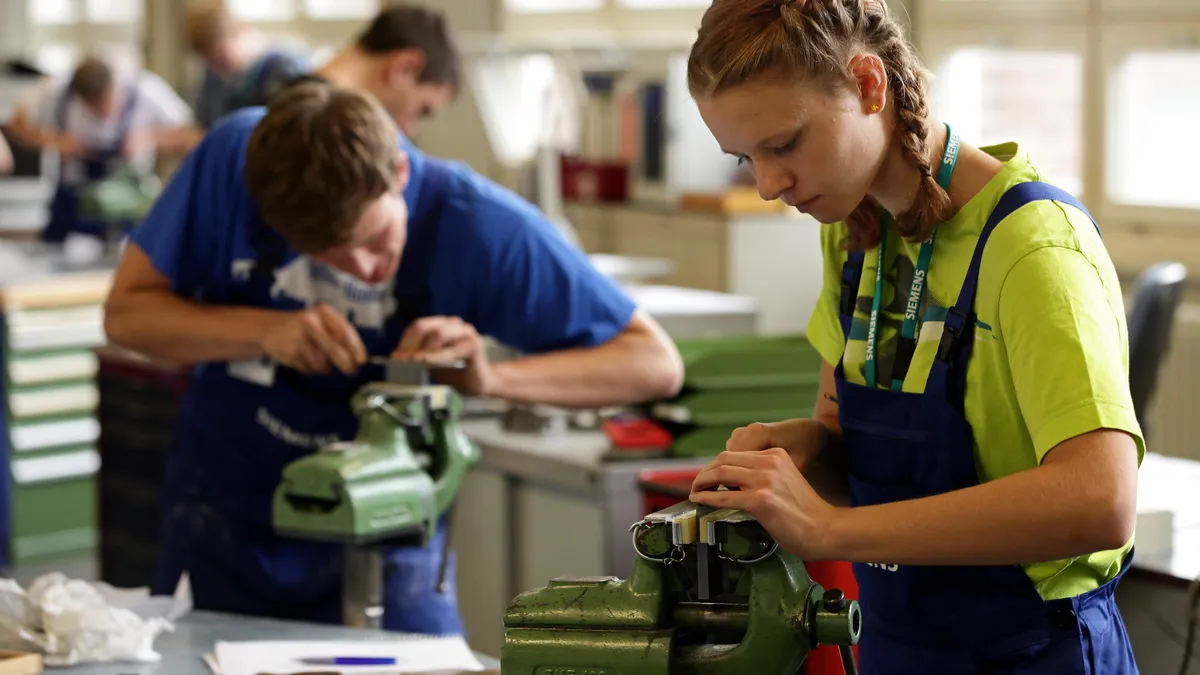Dive Brief:
-
From building skills in growing fields like solar energy to identifying opportunities in healthcare, school districts looking to prepare students for high-need jobs can work with local industry stakeholders to help develop and strengthen career and technical education programs.
-
School districts that receive federal Perkins funding already have to make sure their programming has some alignment with the local labor market, said Alisha Hyslop, chief policy, research, and content officer for the Association for Career and Technical Education. They can use that information to reach out to local industry groups and businesses to help them realign their CTE programs.
-
"Have a conversation with a variety [of industry stakeholders] in your local area, particularly for high schools, because you want to keep opportunities open for students,” said Hyslop. “It’s important to be talking to not just one company but a number of different partners who may be hiring.”
Dive Insight:
There are additional ways districts can support students with career and technical education needs in addition to partnering with local businesses, said Hyslop.
One is to, in effect, send teachers back into the workplace — a path that Wyoming implemented a couple of years ago, Hyslop said. The University of Wyoming is working to train more CTE educators, but the state also offers teacher externships, where educators can spend two to three weeks during the summer learning new skills that they can bring back to their CTE programs during the academic year.
She also encourages districts to stay up to date with shifts happening within an industry. Perhaps a new microchip facility is being built in a community where schools can start training students in skills that could open doors into those positions.
In other communities, schools should ensure the courses they offer present the latest training for that industry. For example, schools may still have physical automobile maintenance as part of their CTE programs, even as the auto industry — including repairs — is more computerized, Hyslop noted.
“Maybe now they should be teaching about how to work on electric batteries,” she said. “If educators have a really strong partnership with employers, then they can make the changes to their program to meet the needs of their economy.”






 Dive Awards
Dive Awards





